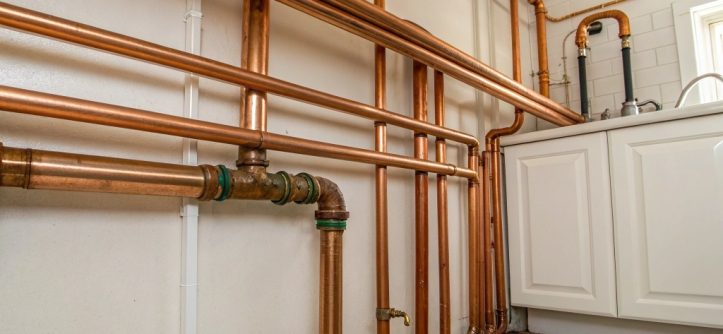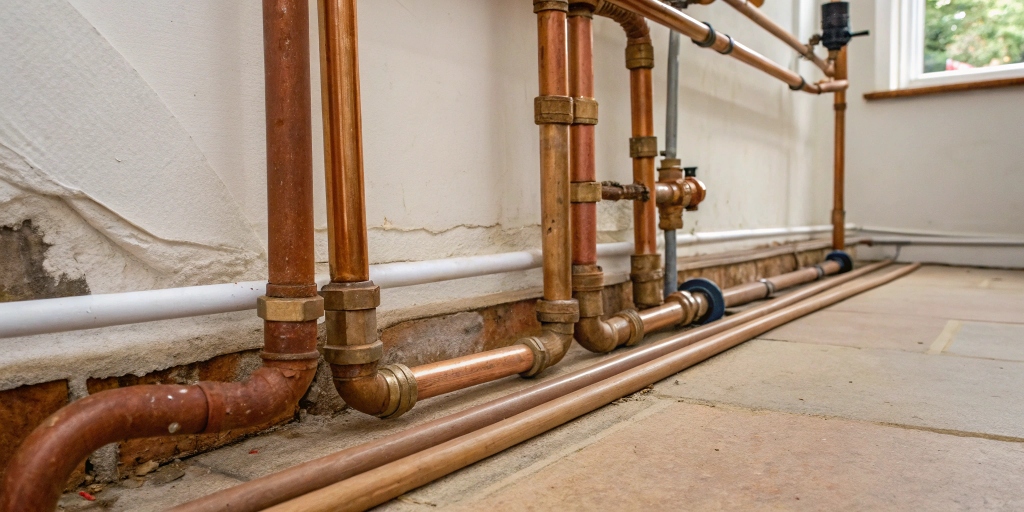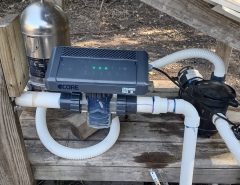Imagine coming home after a long day only to find water pooling in your basement, seeping from an unseen crack in your plumbing system. It’s a homeowner’s nightmare, and it often raises the urgent question: How long does copper plumbing last? If your home relies on copper pipes—a common choice in many U.S. households built between the 1960s and early 2000s—you’re not alone in wondering about their durability. Copper has long been praised for its reliability, but like any material, it doesn’t last forever. In this in-depth guide, we’ll explore the copper pipe lifespan, factors that influence it, signs of trouble, and practical steps to keep your system running smoothly. Whether you’re dealing with old copper plumbing in an older house or planning for the future, understanding these details can save you time, money, and headaches.
What Is Copper Plumbing and Why Is It Popular?
Copper plumbing refers to the use of copper pipes for water supply lines, drains, and sometimes even heating systems in residential and commercial buildings. These pipes come in rigid or flexible forms and are joined using soldering, compression fittings, or crimping. Copper’s popularity stems from its natural resistance to corrosion, ability to handle high temperatures, and non-toxic properties that help maintain clean drinking water.
Unlike plastic alternatives like PVC or PEX, copper doesn’t leach harmful chemicals over time, making it a go-to for potable water systems. However, its copper pipe life expectancy can vary widely based on several conditions. Homeowners often choose copper for its proven track record, but knowing the ins and outs ensures you’re prepared for maintenance or upgrades.
The Average Lifespan of Copper Pipes
So, how long do copper pipes last? On average, well-installed copper plumbing can endure for 50 to 70 years, with some systems pushing beyond 80 years under optimal conditions. This range accounts for typical household use, but real-world performance depends on the type of copper used and environmental factors.
Copper pipes are categorized by wall thickness, which directly impacts their durability:
- Type M: The thinnest and most affordable option, often used in low-pressure applications. Its lifespan typically ranges from 20 to 50 years, but it’s less ideal for demanding setups due to quicker wear.
- Type L: A mid-range choice with thicker walls, commonly found in residential plumbing. It offers a solid 50-year copper pipe lifespan and is suitable for both indoor and outdoor use.
- Type K: The thickest and most robust, primarily for underground or high-pressure lines. These can last over 50 years, sometimes up to 100, making them a premium pick for longevity.
In a standard house setting, how long does copper plumbing last in a house? Expect 50-70 years if the system is maintained properly, but aggressive water conditions or poor installation can shorten this to as little as 20-30 years. For buried lines, how long do copper pipes last underground? Similar timelines apply—50-70 years—but soil acidity, moisture, and electrolysis (from stray electrical currents) can accelerate corrosion, leading to failures in 20-50 years if not protected with sleeves or coatings.
Regional differences play a role, too. For instance, how long does copper plumbing last in Florida? Due to the state’s humid climate, sandy soils, and mineral-rich water, copper pipes here often max out at around 50 years. High heat and humidity promote oxidation, while groundwater contaminants can erode the material faster than in drier climates.
Key Factors Affecting Copper Pipe Life Expectancy
The longevity of your copper plumbing isn’t set in stone; several variables can either extend or diminish its service life. Understanding these helps you take proactive measures.
Water Quality and Chemistry
Water is the lifeblood of your plumbing, but it can also be its downfall. Acidic water (low pH) corrodes copper from the inside, causing pinhole leaks over time. Hard water, laden with minerals like calcium and magnesium, leads to scaling that restricts flow and stresses pipes. Chloramines—common in municipal water treatment—can trigger rapid pitting, sometimes within 2-5 years of exposure. In areas with well water, high sediment, or aggressive chemistry, the expected copper pipe lifespan is.
Installation Quality
A botched installation is a recipe for early failure. Improper soldering, inadequate support, or mismatched fittings can create weak points prone to leaks. Professional plumbers ensure pipes are sized correctly and secured, which is crucial for long-term performance.
Water Pressure and Usage
High water pressure (above 80 psi) hammers at joints and walls, accelerating wear. Homes with heavy usage, like large families or frequent laundry, see more strain. Regulating pressure with a valve can add years to your system.
Climate and Environmental Conditions
Extreme temperatures affect expansion and contraction. In cold regions, freezing water can burst pipes, while hot, humid areas like Florida exacerbate corrosion through moisture and heat. Underground installations face additional risks from soil composition—acidic or clay-heavy soils corrode faster, while sandy soils in Florida can shift and damage lines.
Pipe Location and Type
Indoor pipes in a house generally outlast those exposed outdoors or buried. How long does copper plumbing pipe last when underground? Protection is key; without it, electrolysis or direct soil contact can limit life to 20-50 years. Opting for Type K enhances underground durability.
Signs That Your Old Copper Plumbing Is Failing
Even durable materials like copper show wear eventually. Spotting issues early prevents major damage. Common red flags include:
- Pinhole Leaks: Tiny holes from internal corrosion, often the first sign in systems over 30 years old.
- Discolored Water: Greenish or bluish tints indicate copper leaching, while brown suggests rust or sediment buildup.
- Low Water Pressure: Gradual drops point to clogs, leaks, or narrowing from scale.
- Visible Corrosion or Stains: Green patina on pipes or fixtures signals external deterioration.
- Unusual Noises or Odors: Gurgling or metallic smells can hint at blockages or breakdowns.
- Increased Water Bills: Unexplained spikes often mean hidden leaks.
If your home has old copper plumbing from the mid-20th century, these symptoms warrant immediate inspection, especially if the system approaches the 50-year mark.
Maintenance Tips to Maximize Copper Pipe Lifespan
Prolonging your copper plumbing’s life is straightforward with regular care. Start by testing your water quality annually—adjust pH if it’s too acidic (below 6.5) using neutralizers. Install a water softener for hard water to prevent scaling.
Monitor pressure and keep it under 60-70 psi. Insulate exposed pipes in cold areas to avoid freezing, and in hot climates like Florida, ensure proper ventilation to reduce humidity buildup. Schedule professional inspections every 2-3 years, including camera checks for underground lines.
Avoid harsh chemicals in drains, as they can erode copper. For underground pipes, consider protective wrappings during installation to shield against soil corrosion.
When Should You Replace Your Copper Pipes?
Don’t wait for a catastrophe. If your pipes are 50+ years old and showing signs like frequent leaks or discoloration, it’s time to consider repiping. In Florida or underground setups, proactive replacement around 40-50 years can prevent issues from escalating.
Repiping involves removing old lines and installing new ones, often with modern materials. Costs vary by home size, but the investment pays off in reliability and property value. Consult a licensed plumber for a thorough assessment—they can spot hidden problems and recommend the best approach.
Alternatives to Copper Plumbing
While copper excels in durability, alternatives might suit your needs better. PEX piping is flexible, affordable, and resists freezing, with a 25-50 year lifespan. CPVC handles hot water well and is corrosion-resistant, lasting 50-75 years. PVC is budget-friendly for cold water lines but limited to 25-40 years. Each has pros and cons—PEX is easier to install, but copper remains superior for longevity in many scenarios.
Frequently Asked Questions (FAQs)
To address some of the most common queries homeowners have about copper pipe life expectancy, we’ve compiled this list based on popular searches and expert insights.
How Often Should Copper Pipes Be Replaced?
Copper pipes don’t need routine replacement if they’re in good condition, but plan for it every 50-70 years, depending on factors like water quality and installation. If you notice signs of wear, such as leaks or corrosion, replace them sooner to avoid damage. In aggressive environments like well water systems, they might need attention after 25 years.
What Causes Pinhole Leaks in Copper Pipes?
Pinhole leaks often result from internal corrosion due to acidic water, high chloramine levels, or electrolysis from electrical currents. Poor installation or mismatched materials can also contribute, leading to tiny perforations that worsen over time.
How Do You Clean Copper Pipes?
For internal cleaning, flush with a vinegar and salt mixture for 10-15 minutes, then rinse with hot water. Avoid harsh chemicals; instead, turn off the water, remove sections if needed, and soak in vinegar. Professional cleaning may be required for severe buildup.
How Do You Stop Corrosion on Copper Pipes?
Prevent corrosion by balancing water pH, installing water softeners, and ensuring proper grounding to avoid electrolysis. Regular inspections and protective coatings on exposed or underground pipes can also help extend their life.
Is Copper Plumbing Better Than PEX or PVC?
Copper offers superior longevity (50-70+ years) and doesn’t leach plastics, but it’s more expensive and labor-intensive to install. PEX is flexible and freeze-resistant but may not last as long; PVC is affordable for cold lines but less durable overall. Choose based on your home’s needs and budget.
How Long Do Copper Pipes Last Compared to Other Materials?
Copper typically outlasts PVC (25-40 years) and matches or exceeds brass (80-100 years), but galvanized steel (80-100 years) rusts faster. Factors like the environment play a big role, but copper’s corrosion resistance makes it a reliable choice for many.
Final Thoughts on Copper Plumbing Durability
In summary, how long does copper plumbing last? Typically 50-70 years, but with careful attention to water quality, installation, and maintenance, you can push that envelope further. Whether you’re assessing copper pipe life expectancy in your Florida home, underground lines, or an older house setup, staying vigilant is key. Old copper plumbing doesn’t have to spell disaster—early intervention keeps things flowing.
Ready to check your system’s health? Contact a trusted local plumber today for an inspection or consultation. Share your experiences in the comments below—have you dealt with copper pipe issues? Subscribe to our blog for more home maintenance tips and stay ahead of potential problems. Your home deserves the best—act now to protect it!
Find out more:
Troubleshooting Hayward T-Cell 15: What to Do When It Stops Working
10 Common Signs of Air in Your Water Pipes and How to Fix Them






Leave a Reply